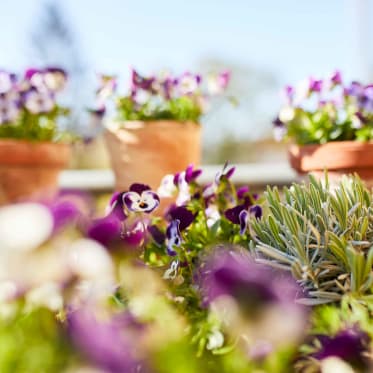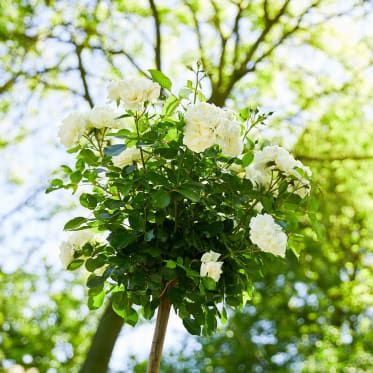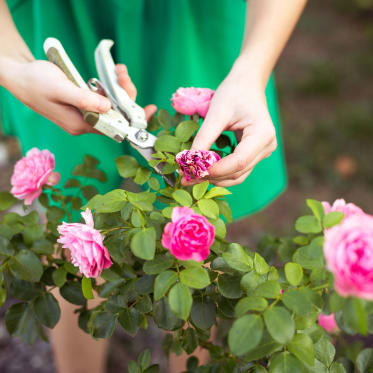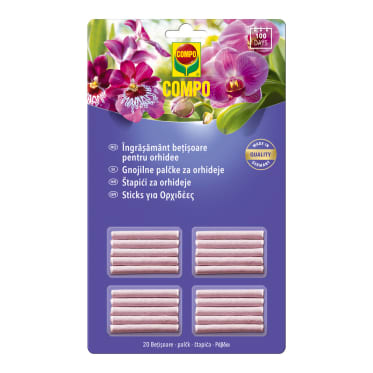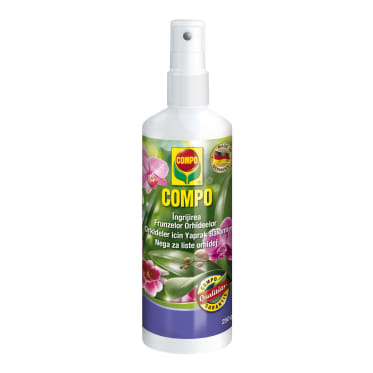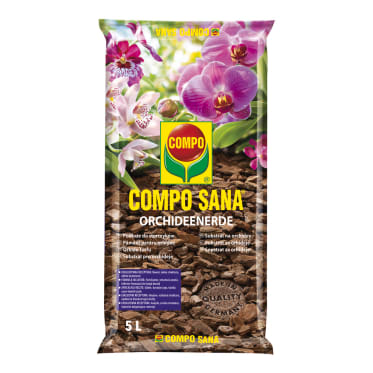Frequent search terms

- COMPO
- Guide
- Plant Care
- Indoor plants
- What you should keep in mind when caring for orchids
Orchid care
What you should keep in mind when caring for orchids
The orchid family is one of the most diverse plant families in the world: About 20,000 wild varieties and 70,000 breeds are currently known. They are particularly popular thanks to their colourful flowers, although they are considered to be very delicate. But there are also some breeds such as the Phalaenopsis which develop wonderfully if you keep a few care tips in mind. Find out the top three tips for handling the sensitive plants properly here.
Watering orchids
Be sure to use the right amount of water for your orchids
Most orchids can't tolerate direct sunlight and therefore grow best on a windowsill facing west or east. If at all possible, orchids should be watered with soft water, e.g. rainwater. Make sure that the temperature is lukewarm and it is better to water too little than too much. Orchids can quickly regenerate when they are watered after a short dry period. But if the roots have become rotten due to waterlogging, the plant will die. The following applies: The root ball needs to dry before you water again, otherwise stagnant water can lead to fungal infestation. Alternatively, you can dip the plants in water. If you do this, make sure to use fresh water for each plant to prevent the transmission of diseases. Orchids also love high humidity, so they should be regularly sprayed special leaf care products.
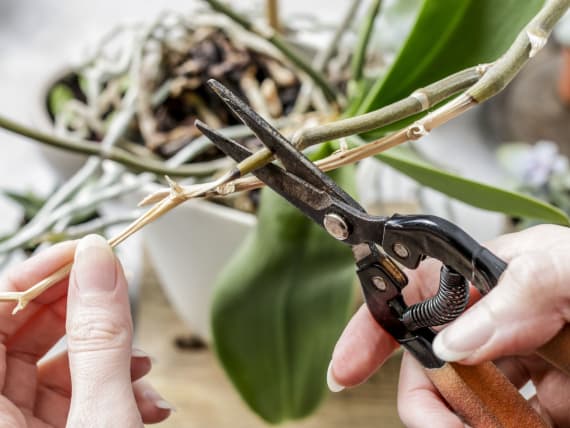
Caring for orchids
Pamper your orchids with pruning and fertilising
Phalaenopsis can bloom several times on the same flower stem. Once the flowers of your orchid have gone or are sparse, you should prune dried shoots just above the third bract, also called bud, with scissors. With a little luck, the flower stem will grow shoots two to three times. But the stem normally dies afterwards.
In addition to air, orchids also regularly need nutrients for healthy development and abundant flower formation. With that in mind, regularly fertilise during the growth and flowering period with a special fertiliser tailored to the needs of the plant.
Repotting orchids
Regularly give your orchids a new home

1
Pick a time
It is a good idea to repot orchids every two years to ensure healthy growth and floral abundance. The best time to do this is in the spring. Keep a close eye on your plant: Once it sprouts new shoots and root tips, you should plant your protégé in a new planter.
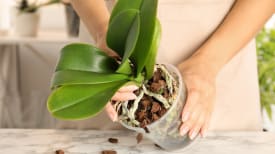
2
Loosen the roots
Gently knead the plastic pot so that the roots come loose.

3
Remove the substrate
Carefully free the roots and completely remove them from the old substrate.
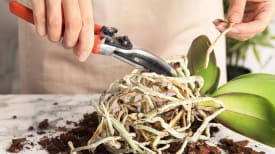
4
Prune old roots
Prune old, dried or rotten roots.

5
Place the orchid in the new pot
Choose a new planter size that offers enough space for one to two new shoots. First fill the lower half of the pot with orchid soil and carefully place the plant in the pot. Then fill in the rest of the soil so that it is positioned between the roots.

6
Water the orchid
Water the plant the following day at the earliest and wait three weeks after repotting before fertilising again.
Decorating orchids
Use special pots for your orchids
Tall, slender pots highlight the narrow and elegant shape of orchids. A step is usually added to special orchid pots for the plant to sit on. This allows excess water to drain off, preventing waterlogging and root rot. Glass pots also have the advantage that light reaches the roots of the orchids. This facilitates photosynthesis, i.e. the conversion of water and carbon dioxide into glucose and oxygen. Unlike other plants which contain the chlorophyll responsible for this process in the leaves, it is found in the roots of orchids.
You might also be interested in these topics
These products help you care for your orchids









